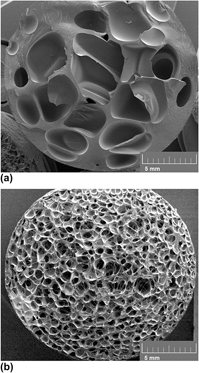Crossref Citations
This article has been cited by the following publications. This list is generated based on data provided by
Crossref.
Wypych, George
2017.
Handbook of Foaming and Blowing Agents.
p.
123.
Wypych, George
2017.
Handbook of Foaming and Blowing Agents.
p.
83.
Wypych, George
2017.
Handbook of Foaming and Blowing Agents.
p.
51.
Hopmann, Christian
Hendriks, Sven
Spicker, Claudia
Zepnik, Stefan
and
van Lück, Frank
2017.
Surface roughness and foam morphology of cellulose acetate sheets foamed with 1,3,3,3‐tetrafluoropropene.
Polymer Engineering & Science,
Vol. 57,
Issue. 4,
p.
441.
Wypych, George
2017.
Handbook of Foaming and Blowing Agents.
p.
103.
Wypych, George
2017.
Handbook of Foaming and Blowing Agents.
p.
195.
Wypych, George
2017.
Handbook of Foaming and Blowing Agents.
p.
179.
Wypych, George
2017.
Handbook of Foaming and Blowing Agents.
p.
29.
Hendriks, Sven
Hopmann, Christian
and
Zepnik, Stefan
2018.
Extrusion foaming of thermoplastic cellulose acetate sheets with HFO‐1234ze and co‐blowing agents.
Polymer Engineering & Science,
Vol. 58,
Issue. S1,
Rokkonen, Teijo
Peltola, Heidi
and
Sandquist, David
2019.
Foamability and viscosity behavior of extrusion foamed PLA–pulp fiber biocomposites.
Journal of Applied Polymer Science,
Vol. 136,
Issue. 41,
Breuer, Robert
Zhang, Yuxiao
Erdmann, Rafael
Vernaez Hernandez, Oscar Eduardo
Kabasci, Stephan
Kostka, Melanie
Reinhardt, Nicolas
Facklam, Martin
and
Hopmann, Christian
2020.
Development and processing of flame retardant cellulose acetate compounds for foaming applications.
Journal of Applied Polymer Science,
Vol. 137,
Issue. 28,
Palombini, Felipe Luis
Nogueira, Fernanda Mayara
Kindlein, Wilson
Paciornik, Sidnei
Mariath, Jorge Ernesto de Araujo
and
de Oliveira, Branca Freitas
2020.
Biomimetic systems and design in the 3D characterization of the complex vascular system of bamboo node based on X-ray microtomography and finite element analysis.
Journal of Materials Research,
Vol. 35,
Issue. 8,
p.
842.
Rokkonen, Teijo
Willberg-Keyriläinen, Pia
Ropponen, Jarmo
and
Malm, Tero
2021.
Foamability of Cellulose Palmitate Using Various Physical Blowing Agents in the Extrusion Process.
Polymers,
Vol. 13,
Issue. 15,
p.
2416.
Wypych, George
2022.
Handbook of Foaming and Blowing Agents.
p.
111.
Wypych, George
2022.
Handbook of Foaming and Blowing Agents.
p.
51.
Wypych, George
2022.
Handbook of Foaming and Blowing Agents.
p.
87.
Wypych, George
2022.
Handbook of Foaming and Blowing Agents.
p.
231.
Wypych, George
2022.
Handbook of Foaming and Blowing Agents.
p.
133.
Wypych, George
2022.
Handbook of Foaming and Blowing Agents.
p.
209.
Wypych, George
2022.
Handbook of Foaming and Blowing Agents.
p.
29.





